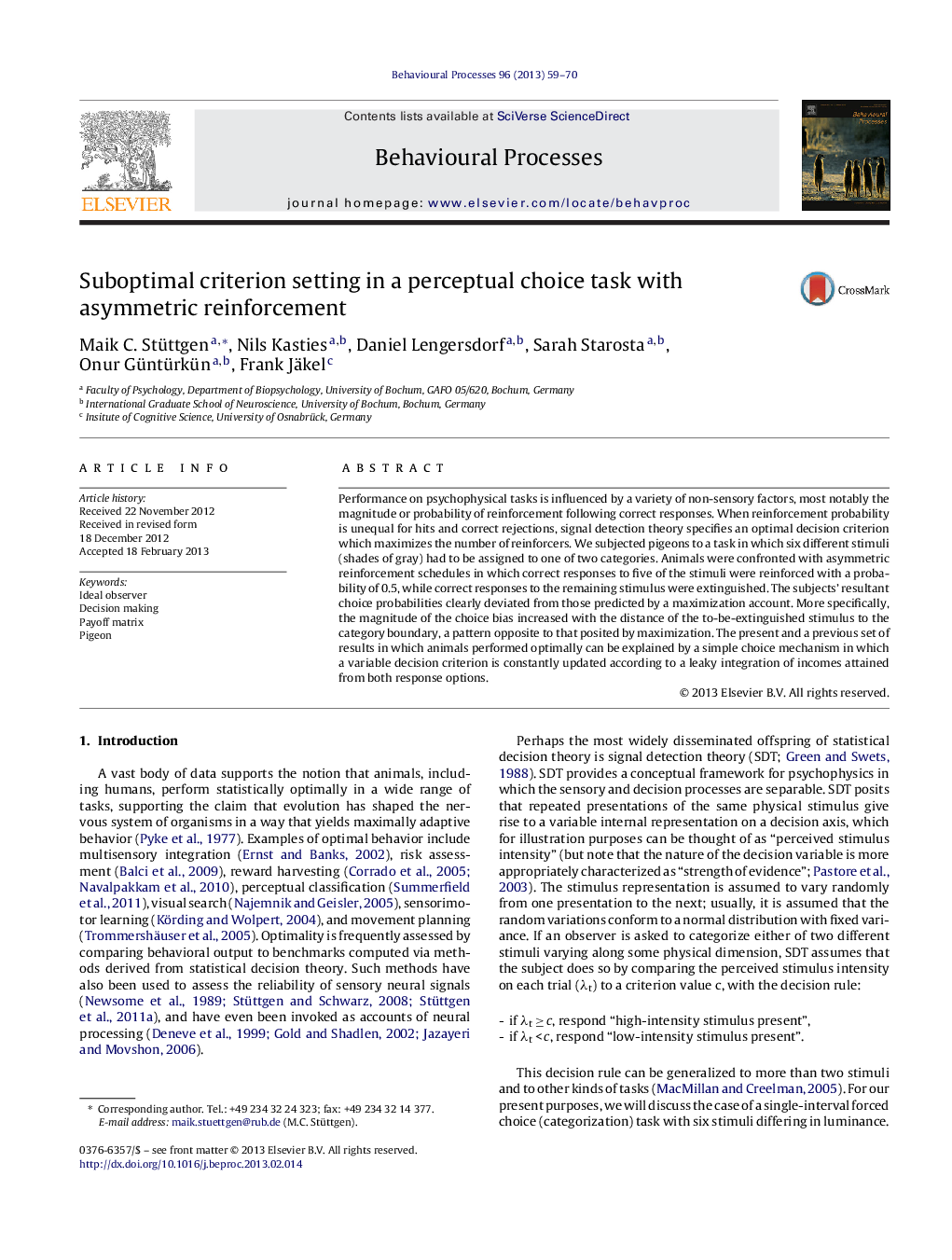| کد مقاله | کد نشریه | سال انتشار | مقاله انگلیسی | نسخه تمام متن |
|---|---|---|---|---|
| 2426791 | 1553183 | 2013 | 12 صفحه PDF | دانلود رایگان |

Performance on psychophysical tasks is influenced by a variety of non-sensory factors, most notably the magnitude or probability of reinforcement following correct responses. When reinforcement probability is unequal for hits and correct rejections, signal detection theory specifies an optimal decision criterion which maximizes the number of reinforcers. We subjected pigeons to a task in which six different stimuli (shades of gray) had to be assigned to one of two categories. Animals were confronted with asymmetric reinforcement schedules in which correct responses to five of the stimuli were reinforced with a probability of 0.5, while correct responses to the remaining stimulus were extinguished. The subjects’ resultant choice probabilities clearly deviated from those predicted by a maximization account. More specifically, the magnitude of the choice bias increased with the distance of the to-be-extinguished stimulus to the category boundary, a pattern opposite to that posited by maximization. The present and a previous set of results in which animals performed optimally can be explained by a simple choice mechanism in which a variable decision criterion is constantly updated according to a leaky integration of incomes attained from both response options.
► Pigeons perform suboptimally in a perceptual categorization task.
► Results are inconsistent with accounts positing maximization of reinforcement.
► Decision criterion could be adjusted through leaky integration of past incomes.
Journal: Behavioural Processes - Volume 96, June 2013, Pages 59–70